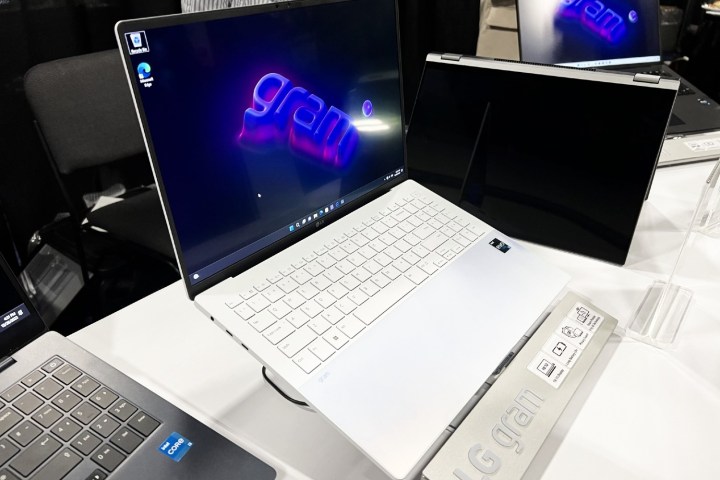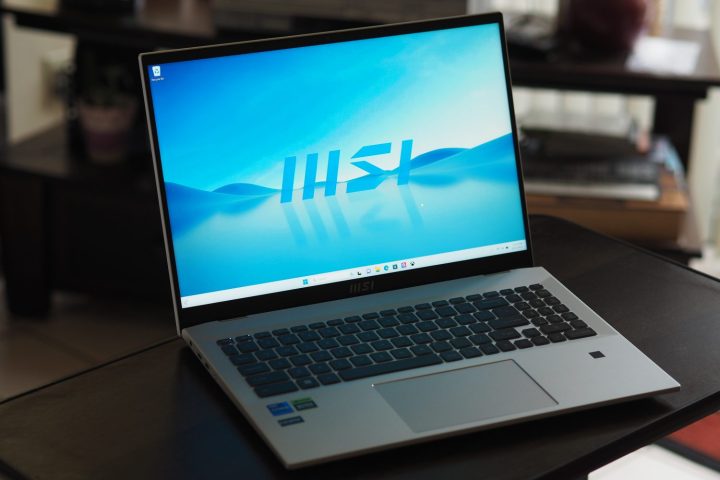I recently praised five great laptops from 2023, ranging from the excellent and affordable Asus Zenbook 14 OLED to the spectacular and expensive $5,000 HP Spectre Foldable PC. But not all of the laptops from 2023 belong on our list of best laptops.
Some of them were downright disappointing. Maybe they were overly expensive, provided inferior performance, or otherwise failed to live up to expectations. I cover six of these disappointing laptops here.
LG Gram Style

The LG Gram Style was one of the most attractive laptops introduced in 2023. It features a gorgeous aesthetic with an iridescent coating that changes color as the lighting changes, along with a hidden haptic touchpad with LEDs that light up along the edges. LG got that part right.
The Gram Style is also lightweight at just 2.76 pounds, making it one of the lighter 14-inch laptops we’ve reviewed. Unfortunately, that’s due to a magnesium chassis that demonstrated significant bending in the lid and flexing in the keyboard deck.
In addition, the Gram Style was one of the slowest laptops we’ve reviewed using the 28-watt Intel Core i7-1260P processor. Normally, that CPU provides excellent performance for demanding productivity tasks, but in the Gram Style, it wasn’t much faster than lower-powered options. And battery life was just average.
Overall, the Gram Style was more style than substance, making it a poor choice at over $2,000.
Surface Laptop Go 3

The Surface Laptop Go 3 is perhaps the most disappointing of the bunch. It’s the third generation of Microsoft’s most affordable Surface laptop, and while it received some marginal spec upgrades, its price also went up significantly.
What started as a competitive budget laptop at $500 with the usual Surface build quality has turned into an $800 laptop that’s too slow and poorly configured to compete. Compared to the Zenbook 14 OLED mentioned above, the Surface Laptop 3 Go is simply an inferior laptop.
To begin with, the 12.4-inch 3:2 display runs at just 1,536 x 1,024 pixels. That’s too low of a resolution to run 1080p video and it shows off the display’s pixels in text. Next, its build quality was too flexible and its plastic construction didn’t live up to its price. Finally, its performance and battery life were well below the competition.
Microsoft’s Surface lineup has some excellent entries. Unfortunately, the Surface Laptop 3 Go isn’t one of them.
Dell Inspiron 14 2-in-1

Budget laptops are so much better than they used to be. For just $700, you can get great performance, battery life, and OLED display quality out of the Asus Zenbook 14 OLED. But not all budget machines are so great, as the Dell Inspiron 14 2-in-1 demonstrates.
Peruse the laptop’s spec sheet and you’ll come away impressed. For $650 when reviewed, it has an AMD Ryzen 5 7530U that provides good productivity performance and solid battery life in a few laptops we’ve reviewed. The 14-inch 16:10 IPS display isn’t the highest resolution, but is fine for the display size and laptop price.
When I reviewed it, I found the performance to be good and the battery life to be excellent. But the display was very disappointing, with poor brightness, colors, and contrast. And the plastic build was subpar.
Unless you’re pricing a laptop at $500 or less, you can no longer offer up an inferior display and build quality. The Inspiron 14 2-in-1 has both of those flaws.
MSI Prestige 16 Studio

On paper, the MSI Prestige 16 Studio looks like a killer laptop. It boasts a fast CPU and GPU, along with a mini-LED running at a blistering 165Hz. It was even relatively inexpensive when reviewed, at $2,100 for a very well-equipped configuration.
Once subjected to our review process, though, things fell apart. To begin with, its mini-LED display was disappointing, especially when compared with Apple’s awesome implementation of the technology in its latest MacBook Pros. In standard dynamic range (SDR) mode, the Windows default out of the box, the Prestige 16 Studio’s Mini-LED panel wasn’t as bright and didn’t offer nearly the same deep contrast as Apple’s. Turn on high dynamic range (HDR) mode and brightness and contrast increased, but colors were significantly worse.
The MSI Prestige 16 Studio demonstrated the same kind of Jekyll and Hyde character in its performance. In balanced mode, the laptop was slower than most machines with the same components. In performance mode, it was merely average, but the fans spun up to an obnoxiously loud speed and the laptop ran downright hot regardless.
Overall, the Prestige 16 Studio failed to live up to its promise. Subsequently, it scored one of the lowest rankings of the many laptops we reviewed in 2023.
LG Gram 17 Pro

It might seem like we’re picking on LG, but we’re not. The company has produced some outstanding laptops. But the LG Gram 17 Pro fell short in a few key areas.
To begin with, LG was a little cavalier with the “Pro” moniker. Usually, that’s reserved for laptops with more powerful components and performance. The LG Gram 17 Pro has a mainstream CPU and an entry-level and last-gen GPU that was slower than in some other laptops. The result was below-average performance for a Pro machine and poor battery life.
My review unit was also quite buggy, which is unusual. Even worse, LG sent me a replacement unit that demonstrated the same issues. A tiny touchpad and average keyboard rounded out this expensive laptop’s disappointing aspects.
Dell Inspiron 16 Plus

There are a growing number of excellent 16-inch laptops aimed at creators. Many of them are available at reasonable prices. The Dell Inspiron 16 Plus promised just that.
Unfortunately, it fell short in some key areas. The first was an unusually flexible build, which made me think it was an all-plastic construction. That turned out to be incorrect, making the aluminum shell even more unimpressive.
Next, the keyboard was poor and the touchpad was too small, making the input options unimpressive. The Inspiron 16 Plus had good performance, but it was quite hot and the fans were loud under load. That’s not a deal-breaker, but many competing laptops are just as fast and a lot cooler and quieter.
Finally, while the IPS display was OK for productivity users, it wasn’t good enough for the laptop’s targeted creators. And there was no better option available. All in all, the Inspiron 16 Plus simply didn’t live up to its competition.


